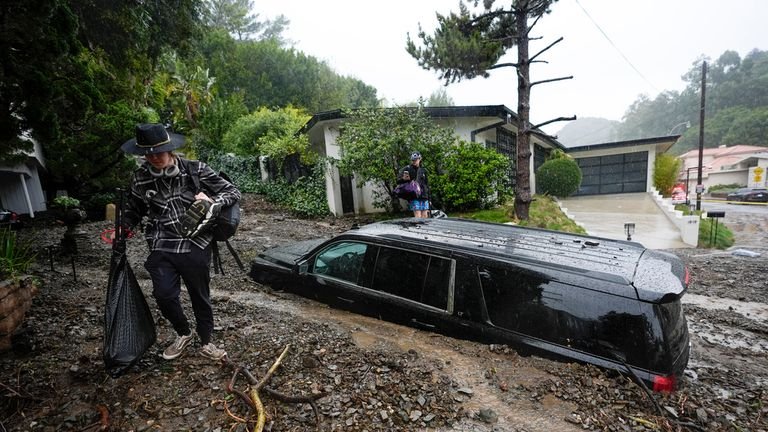California is currently experiencing an atmospheric river-fueled storm, resulting in heavy rain, flooding, and dangerous conditions in Los Angeles, San Diego, and other affected areas. This powerful weather event has led to a state of emergency, with historic flood threats and significant impacts on local communities.
An atmospheric river is a concentrated band of moisture in the atmosphere, often originating in the tropics and extending towards higher latitudes. In California, this phenomenon is sometimes referred to as a “Pineapple Express” due to the tropical connection. These weather systems can transport vast amounts of water vapor, leading to heavy precipitation and flooding when they make landfall.
The current storm has already brought more than a foot of rain in some areas, with record-setting rain totals recorded in Southern California. The Los Angeles River, in particular, is at risk of overflowing, posing a significant threat to nearby communities.
Governor Gavin Newsom declared a state of emergency in several California counties, including San Diego, due to the atmospheric river’s impacts. The declaration enables state and local governments to access additional resources, personnel, and funding to manage the crisis and support affected residents.
As the storm system moves through California, it has resulted in power outages, property damage, and hazardous conditions. At least three people have died, and over 94,000 residents remain without power in the aftermath of the powerful storms.
Climate change may be contributing to the increased frequency and intensity of atmospheric river events in California. Warmer ocean temperatures and altered atmospheric patterns can enhance the moisture content of these weather systems, leading to more extreme precipitation events and increased flood risks.
Despite the challenges presented by the atmospheric river, Californians are demonstrating resilience and determination in the face of adversity. Neighbors are coming together to support one another, and emergency responders are working tirelessly to ensure public safety.
As the storm system continues to move through California, residents are encouraged to stay informed, monitor local weather updates, and heed any warnings or advisories issued by local authorities. By working together, communities can navigate this challenging weather event and emerge stronger on the other side.
What is an atmospheric river California?
An atmospheric river (AR) is a meteorological phenomenon characterized by a concentrated band of moisture in the atmosphere, often extending thousands of kilometers from the tropics to higher latitudes. When an AR makes landfall, it can result in heavy precipitation, including rain and snow, and increased flood risks. In California, ARs are often associated with the “Pineapple Express” nickname due to their tropical origins and moisture-laden nature. These systems can transport significant amounts of water vapor, leading to substantial precipitation events and potential flooding when they reach the West Coast.
What is atmospheric river flooding?
Atmospheric river flooding occurs when an atmospheric river (AR) makes landfall and brings heavy precipitation to a region, leading to saturated soils, swollen rivers, and increased flood risks. The AR acts as a conveyor belt for moisture, transporting large quantities of water vapor from the tropics to higher latitudes. When this moisture-laden airmass encounters topography, such as mountains or hills, it can result in orographic precipitation, further exacerbating flood risks.
AR flooding can have severe consequences, including property damage, road closures, power outages, and loss of life. As a result, it is essential to stay informed about AR events and heed any warnings or advisories issued by local authorities during these weather events. By taking necessary precautions and preparing for potential flooding, communities can minimize the impacts of AR flooding and ensure public safety.
What is an atmospheric river storm?
An atmospheric river storm is a weather event characterized by the arrival of an atmospheric river (AR) in a region, resulting in heavy precipitation, strong winds, and increased flood risks. AR storms are often associated with the “Pineapple Express” nickname due to their tropical origins and moisture-laden nature. These systems can transport significant amounts of water vapor, leading to substantial precipitation events and potential flooding when they reach the West Coast.
AR storms can have severe consequences, including property damage, road closures, power outages, and loss of life. They can also lead to hazardous conditions, such as landslides, debris flows, and avalanches, particularly in mountainous regions. As a result, it is essential to stay informed about AR storms and heed any warnings or advisories issued by local authorities during these weather events. By taking necessary precautions and preparing for potential hazards, communities can minimize the impacts of AR storms and ensure public safety.





